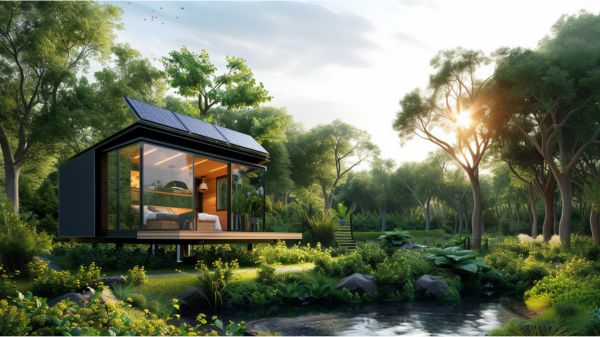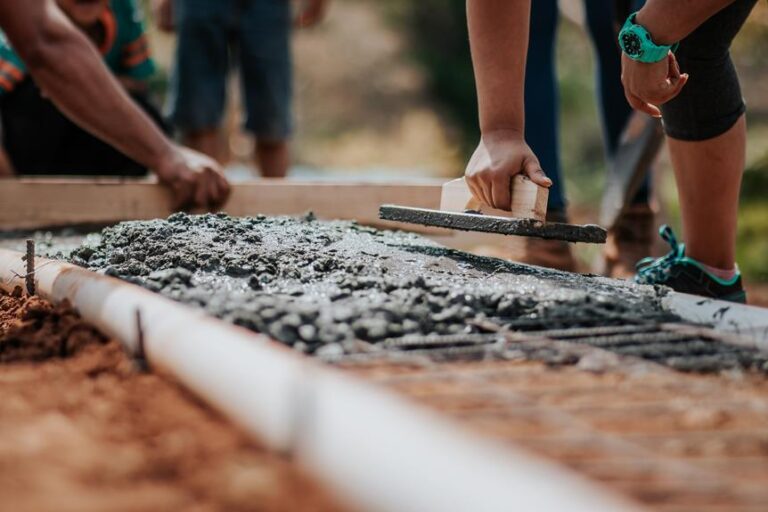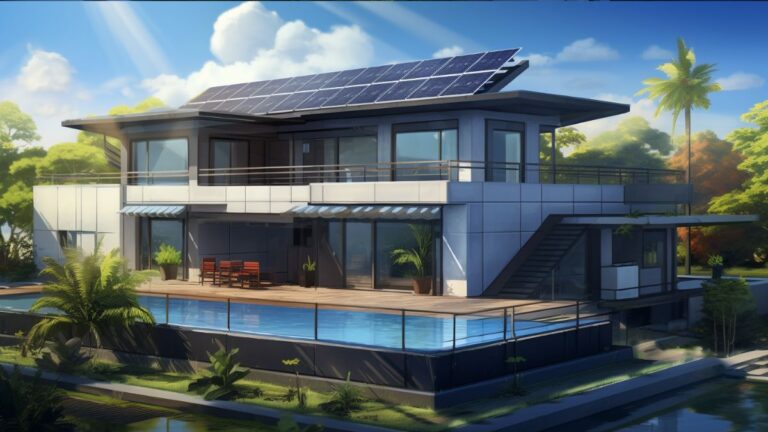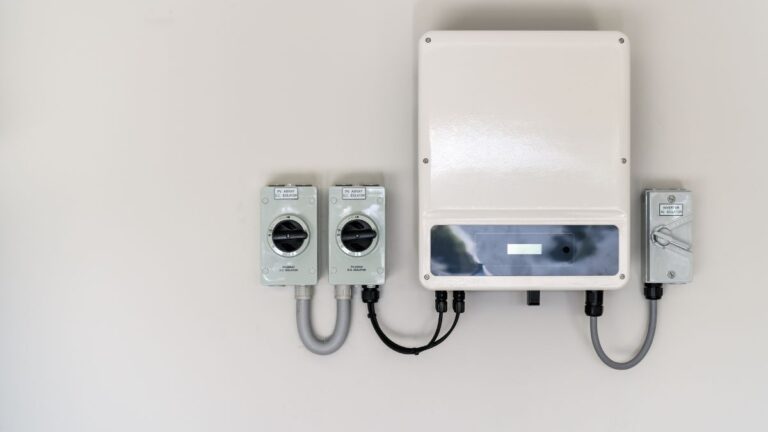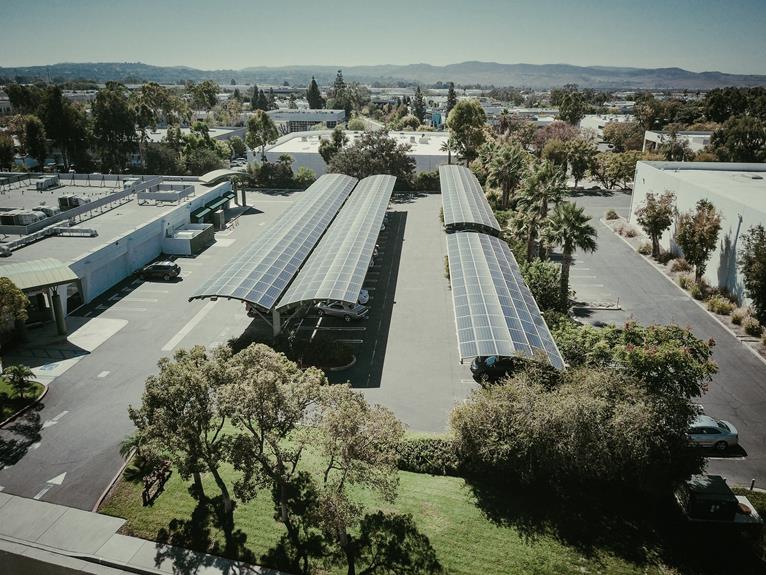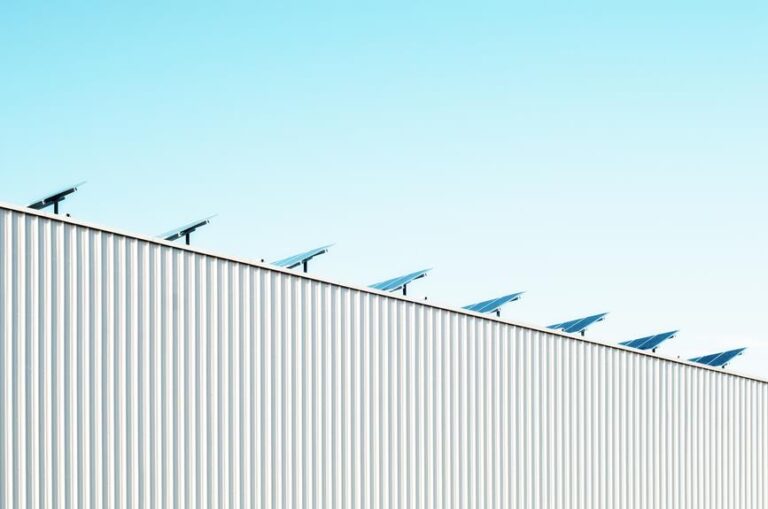8 Essential Off-Grid Solar Power Tips for Tiny Homes
Imagine your tiny home as a sunflower, turning its face towards the sun, soaking up its energy and converting it into power. But how can you ensure that your solar power system is working at its full potential? In this discussion, we will explore eight essential off-grid solar power tips specifically tailored for tiny homes.
From finding the perfect spot for your solar panels to planning for future expansion, these tips will help you make the most out of the sun’s rays and keep your tiny home powered up and running efficiently.
So, let’s shed some light on these valuable tips and discover how you can enhance your solar power experience in your tiny abode.
Key Takeaways
- Position solar panels on the south-facing side and avoid shading for maximum sunlight absorption.
- Calculate energy needs and system size based on daily watt hours and peak power demands.
- Choose battery storage system based on energy density, lifespan, and compatibility with the inverter.
- Opt for energy-efficient appliances and lighting, such as Energy Star-rated appliances and LED bulbs, for cost savings and sustainability.
Solar Panel Placement for Optimal Sun Exposure
To ensure optimal sun exposure and maximize energy generation, place your solar panels on the south-facing side of your tiny home. This placement allows the panels to receive the maximum amount of sunlight throughout the day.
It’s important to position the panels in a way that avoids shading from trees, buildings, or any other obstructions that may interfere with their performance. Additionally, consider the angle adjustment of the panels to capture the most sunlight during different seasons. Tilt mounts or adjustable racks can help optimize the panel angles for better sunlight absorption and energy generation.
Regularly cleaning and maintaining the panels is also crucial to remove debris and dirt that can reduce their efficiency. By following these placement and optimization techniques, you can ensure your solar panels generate the maximum amount of energy for your tiny home.
Sizing Your Solar Power System for Your Tiny Home
Accurately calculating your energy needs is crucial when sizing your solar power system for your tiny home. To help you in this process, consider the following:
- Calculate your energy needs based on the specific heat source and types of appliances used in your tiny home.
- Estimate the total watt hours used per day by appliances and tools to determine the size of the solar power system needed.
- Consider the peak power demands of your tiny home to ensure that your solar power system can handle simultaneous operation of high-draw items.
Instead of selling panels, consider adding more to your system for increased efficiency and energy production.
Plan your system components based on real-time energy data to optimize the performance and efficiency of your solar power setup for your tiny home.
Related Post: Tiny House Made Easy – Building And Designing A Tiny House.
Choosing the Right Battery Storage for Off-Grid Living
When choosing the right battery storage for off-grid living, it’s important to consider factors such as energy density, lifespan, and maintenance requirements.
Lithium batteries are commonly used for off-grid living due to their high energy density, longer lifespan, and deep cycling capabilities. They offer a higher capacity and are more efficient compared to lead-acid batteries.
However, lead-acid batteries are a more affordable option, although they require more maintenance and have a shorter lifespan.
Properly sizing the battery storage system is crucial to ensure sufficient energy reserves during periods of low solar generation or high energy consumption. Battery capacity, measured in kilowatt-hours (kWh), determines the amount of energy that can be stored.
Additionally, it’s essential to consider inverter compatibility with the chosen battery type and voltage for efficient energy conversion and utilization in off-grid solar power systems.
Energy-Efficient Appliances and Lighting for Maximum Power Savings
Energy-efficient appliances and lighting are essential for maximizing power savings in a tiny home setup. By making smart choices in your appliances and lighting, you can significantly reduce your electricity consumption and save money. Consider the following options for maximum power savings:
- Energy-efficient appliances: Opt for Energy Star-rated appliances, which can save up to 30% in electricity consumption compared to standard appliances.
- LED light bulbs: These bulbs consume 75% less energy and last 25 times longer than incandescent bulbs, providing long-term power savings.
- Smart power strips: Use these strips to prevent energy waste from electronics in standby mode, ensuring that power isn’t being unnecessarily consumed.
- Make informed choices: Select appliances and lighting options that prioritize energy efficiency, allowing you to achieve significant power savings.
- Maximize your savings: By incorporating energy-efficient appliances and LED light bulbs into your tiny home setup, you can save on electricity costs and reduce your environmental footprint.
Choosing energy-efficient appliances and lighting options is a crucial step towards achieving maximum power savings in your tiny home.
Proper Maintenance and Cleaning of Solar Panels
To maintain optimal energy production and efficiency, it’s crucial to regularly clean and properly maintain your solar panels. Dirt, dust, and debris can reduce energy production by up to 25%, so it’s important to keep them clean.
Use a soft brush or a squeegee with a mild detergent and water to clean the panels without scratching the surface. Bird droppings, leaves, and other obstructions should also be monitored and cleared as they can block sunlight and impact solar panel efficiency.
Additionally, check for shading from nearby trees or structures to ensure your panels have optimal sunlight exposure for maximum energy generation. To detect any issues early and maintain peak performance, schedule annual professional inspections.
Backup Power Options for Cloudy Days or Emergencies
When it comes to off-grid living in a tiny home, having backup power options is essential for cloudy days or emergencies. Consider alternative power sources like a generator or portable power station to ensure continuous electricity supply. Battery storage solutions can also provide backup power when solar energy production is low.
Alternative Power Sources
For off-grid tiny homes, there are various backup power options available for cloudy days or emergencies, including generators, wind turbines, hydroelectric systems, and fuel-powered generators.
Here are some alternative power sources to consider:
- Lithium-ion batteries: These battery storage systems provide reliable backup power for cloudy days or emergencies.
- Portable power stations: Equipped with solar panels, these stations can provide backup power for small electronics and essential devices during outages.
- Propane generators: Common backup options for off-grid living, they offer reliable power during extended cloudy periods or emergencies.
- Micro-hydro systems: Utilize flowing water to generate electricity, making them effective backup power sources for off-grid tiny homes.
Having alternative power sources is crucial for off-grid living, ensuring that you have reliable backup power when you need it the most.
Battery Storage Solutions
Consider various battery storage solutions for backup power during cloudy days or emergencies in off-grid solar systems. Lithium batteries are a popular choice due to their high energy density and long lifespan. AGM batteries provide reliable backup power with maintenance-free operation and good performance in varying temperatures.
For a cost-effective option, lead-acid batteries offer consistent performance and easy maintenance. If durability is a priority, nickel-iron (Ni-Fe) batteries are known for their long lifespan, wide temperature tolerance, and minimal maintenance requirements.
When selecting a battery storage solution, it’s essential to consider the battery capacity needed based on your energy usage patterns. This ensures you have sufficient storage to power your tiny home during cloudy days or emergencies, providing you with the freedom and independence of off-grid living.
Generator as Backup
To ensure a reliable power source during cloudy days or emergencies, consider using a generator as a backup option for your off-grid tiny home. Here are some key factors to consider when choosing a backup power source for your off-grid living:
- Fuel Type: Select a generator that runs on a fuel type readily available to you, such as gasoline, propane, or diesel.
- Capacity: Determine the power capacity you need based on your energy requirements. Consider the appliances and devices you’ll be running during power outages or low sunlight conditions.
- Runtime: Look for a generator with a long runtime to ensure continuous power supply. Calculate how long the generator can run on a full tank of fuel.
- Maintenance: Regular maintenance is crucial for the effectiveness of your backup generator. Follow the manufacturer’s guidelines and schedule routine maintenance to keep it in optimal condition.
- Testing: Periodically test your backup generator to ensure it’s functioning properly. This will give you peace of mind knowing it will be ready when you need it most.
Monitoring and Tracking Your Energy Usage
To effectively manage your off-grid solar power system in your tiny home, it’s crucial to monitor and track your energy usage.
By implementing energy usage tracking techniques, you can gain valuable insights into your daily consumption patterns and identify areas where you can optimize energy usage.
Monitoring your energy usage allows you to detect any system issues early on and make timely adjustments for increased energy efficiency.
Energy Usage Tracking Techniques
Energy monitoring is a crucial tool that allows you to track and optimize your energy usage in tiny homes. To help you take control of your energy consumption, here are some effective energy usage tracking techniques:
- Install energy monitoring systems: These systems detect issues early and increase energy efficiency in your tiny home.
- Utilize remote monitoring: With remote monitoring, you can conveniently access real-time insights into your energy consumption from anywhere.
- Track and analyze energy usage: By tracking your energy usage, you can identify trends and make informed decisions to optimize energy usage.
- Size your solar power system accurately: Tracking energy usage helps you determine the appropriate size of your off-grid solar power system, maximizing its benefits.
- Embrace energy monitoring for off-grid living: Energy monitoring systems are essential for tiny homes relying on off-grid solar power, ensuring efficient and sustainable energy usage.
Importance of Monitoring
Monitoring and tracking your energy usage is essential for optimizing performance and increasing energy efficiency in your tiny home. By monitoring your energy usage, you can detect any issues early on, preventing costly system failures.
Remote monitoring provides convenience and allows for proactive maintenance, ensuring that your off-grid living experience remains hassle-free. Additionally, energy monitoring systems help you understand your energy consumption patterns, enabling better management of your system.
This knowledge allows you to make informed decisions on how to further optimize your energy usage and maximize the reliability of your power supply. With the ability to remotely monitor your energy usage, you can liberate yourself from the worries of potential system failures and confidently embrace the freedom of off-grid living.
| Keyword | Importance |
|---|---|
| Energy usage | Monitoring energy usage allows you to optimize performance and increase energy efficiency in your tiny home. |
| Optimize performance | Monitoring helps you detect issues early on, preventing costly system failures. |
| System failures | Early detection through monitoring can prevent system failures, saving you time and money. |
| Remote monitoring | Remote monitoring provides convenience and allows for proactive maintenance, ensuring a hassle-free off-grid living experience. |
| Energy consumption patterns | Monitoring your energy usage helps you understand consumption patterns, enabling better system management and informed decision-making for optimizing energy usage. |
Planning for Future Expansion of Your Solar Power System
When planning for the future expansion of your solar power system, it’s crucial to consider your future energy needs and potential expansions. Here are some important factors to keep in mind:
- Factor in additional appliances or increased usage patterns when designing the system for future scalability.
- Leave room for adding more solar panels, batteries, or upgrading components to accommodate future growth.
- Consult with solar energy experts to analyze your current setup and recommend adjustments for future expansion.
- Plan for technological advancements in solar power systems to ensure compatibility and integration with future upgrades.
Frequently Asked Questions
How Many Solar Panels Would You Need to Power a Tiny House?
To power a tiny house, you would need to determine the number of solar panels based on your energy consumption. Factors like solar panel efficiency, battery storage options, and off-grid power management should be considered. Also, alternative power sources and cost considerations are important.
How Do You Power off the Grid in a Tiny House?
To power off the grid in your tiny house, utilize off-grid power sources like solar panels and batteries for energy storage. Improve energy efficiency with inverters and charge controllers. Consider alternative options like portable generators to overcome off-grid living challenges.
How Many Solar Panels Do I Need to Run a Small House?
To run a small house off-grid, you’ll need to consider your energy consumption, solar panel efficiency, and battery storage. Consult with a professional to assess your needs and design a sustainable solar panel installation.
Can You Live Off-Grid in a Tiny House?
Yes, you can live off-grid in a tiny house. Achieve sustainable living with energy efficient appliances, water conservation, composting toilets, off-grid heating options, and off-grid internet solutions. Experience liberation from public utilities.
Conclusion
By following these eight essential off-grid solar power tips, you can harness the power of the sun, live off-grid in your tiny home, and enjoy the freedom and sustainability that solar energy provides.
Imagine waking up in your cozy, solar-powered sanctuary, knowing that you’re saving money, reducing your carbon footprint, and living in harmony with nature.
With careful planning and monitoring, you can maximize the benefits of solar power and create a truly sustainable lifestyle.
